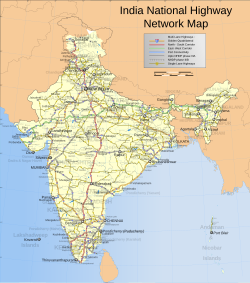NHAI: National Highways Authority of India and Its Impact

Introduction to NHAI
The National Highways Authority of India (NHAI) plays a crucial role in maintaining and developing India’s national highways. Established in 1988, the NHAI is responsible for the implementation of the National Highways Development Project (NHDP), a significant initiative aimed at enhancing road infrastructure across the country. As the vehicle of economic growth and development, the condition and expansion of national highways directly influence trade, commerce, and mobility for millions of Indians.
Recent Developments
Recently, the NHAI has announced an ambitious plan to expand the national highway network by adding over 60,000 kilometers to facilitate better connectivity and efficient transportation. This initiative aligns with the government’s vision of reaching a total of 2 lakh kilometers in the national highway network by 2024. Moreover, the NHAI has been focusing on modern technologies for project management and quality monitoring, including the use of drones for land surveys and satellite imagery for project monitoring.
In addition, the NHAI is working on the fast-track implementation of the Bharatmala Project, which aims to optimize the efficiency of freight movement across the country. Recently, an investment of ₹1.2 lakh crore was approved for the development of 34,800 kilometers of highways under this project, targeting economic corridors, border areas, and coastal regions.
Sustainability Efforts
NHAI is also prioritizing sustainability in its projects. To combat climate change, the authority has begun integrating green technologies into highway construction, such as using environmentally friendly materials and techniques in road building. Initiatives include developing green corridors and promoting the use of electric vehicles by installing EV charging stations along highways.
Future Outlook
The initiatives and projects undertaken by the NHAI signify a transformative phase for India’s highway infrastructure. As the agency continues to innovate and implement advanced technologies, experts anticipate significant improvements in connectivity and transportation efficiency, ultimately leading to economic growth. The ongoing focus on sustainability will also position NHAI as a leader in environmentally responsible infrastructure development.
Conclusion
The NHAI’s efforts are critical to the seamless functioning of the national economy. As infrastructure development continues to be a priority for the Indian government, the NHAI’s role will become even more significant in the years to come. By enhancing connectivity and adopting sustainable practices, NHAI is not only paving roads but also highways to the future of India.









